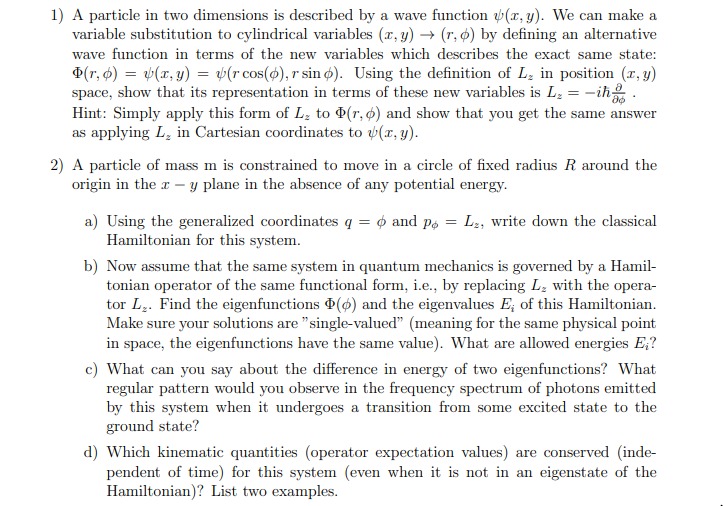Answered step by step
Verified Expert Solution
Question
1 Approved Answer
Work on this question please tutors; 1) A particle in two dimensions is described by a wave function v(r, y). We can make a variable
Work on this question please tutors;

Step by Step Solution
There are 3 Steps involved in it
Step: 1

Get Instant Access to Expert-Tailored Solutions
See step-by-step solutions with expert insights and AI powered tools for academic success
Step: 2

Step: 3

Ace Your Homework with AI
Get the answers you need in no time with our AI-driven, step-by-step assistance
Get Started


